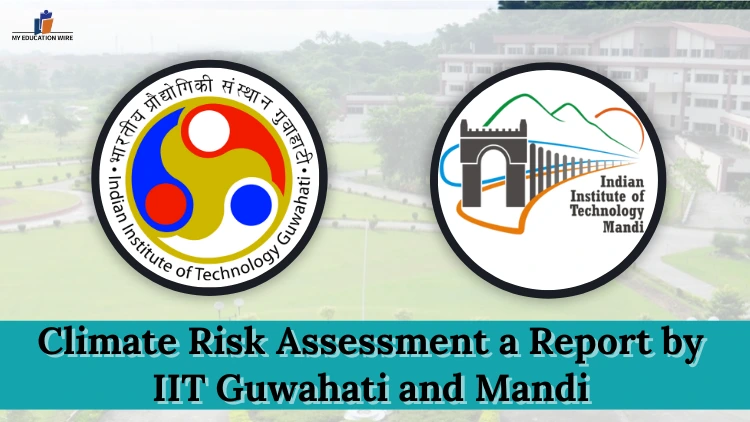IIT Guwahati,IIT Mandi and centre for study of scence technology and Policy Bengaluru released the report District level Climate Risk Assessment for India- mapping flood and drought risks using IPCC framework on December 13 2024.
Also Read :- IIT Guwahati Hosts PyroAsia 2024 – International Event on Nov 28-29
The report provides a detailed analysis of district-level climate risks in India. Using the Intergovernmental Panel on Climate Change (IPCC) framework, the study identifies the dual challenges posed by floods and droughts and highlights their disproportionate impact on vulnerable populations. The findings underscore the urgent need for tailored, region-specific adaptation strategies to enhance resilience supported by the Department of Science and Technology (DST), Government of India, and the Swiss Agency for Development and Cooperation (SDC), Embassy of Switzerland,.

Stay Updated With Us and Join Now.
| Join Our Whatsapp Group | Click Here |
| Join Our Telegram Channel | Click Here |
The report was launched by distinguished dignitaries, including Dr. Anita Gupta, Head of Scientific Divisions, DST; Mr. Pierre-Yves Pitteloud, Senior Regional Advisor for Disaster Risk Reduction (DRR) and Climate Change Adaptation (CCA), Swiss Agency for Development and Cooperation (SDC); Dr. Susheela Negi, Scientist-F, DST; and Dr. Swati Jain, Scientist-E, DST, in the virtual presence of Prof. Devendra Jalihal, Director, IIT Guwahati; and Prof. Laxmidhar Behera, Director, IIT Mandi. Key researchers contributing to the report, including Prof. Ravindranath from IISc Bangalore, Dr. Indu K. Murthy from CSTEP, Bengaluru, Dr. Shyamasree Dasgupta from IIT Mandi, and Dr. Anamika Baruah from IIT Guwahati, were also present.
Key findings of the report:
Ø Flood Risk: Fifty-one districts in India face “Very High” flood risk, with 118 more categorised as “High” risk. Vulnerable regions include Assam, Bihar, Uttar Pradesh, West Bengal, Gujarat, Odisha, and Jammu and Kashmir.
Ø Drought Risk: Ninety-one districts are identified with “Very High” drought risk, and 188 districts face “High” drought risk, primarily in Bihar, Assam, Jharkhand, Odisha, and Maharashtra.
Ø Dual Risk Areas: Alarmingly, 11 districts, including Patna (Bihar), Alappuzha (Kerala), and Kendrapara (Odisha), are at “Very High” risk for both floods and droughts, necessitating immediate interventions.
The study integrates climatic hazards, exposure, and vulnerability to offer a comprehensive view of district-level risks. It aligns with the Hon’ble Prime Minister of India’s 10-point agenda for disaster risk reduction and highlights the direct impacts on people and livelihoods, paving the way for data-driven adaptation planning.
The report also emphasises capacity building at the state level, equipping climate change cells and allied departments with tools and methodologies for integrating risk assessments into their adaptation plans. Workshops and training sessions conducted as part of this study have fostered a knowledge network among state departments, academic institutions, and local stakeholders.
This initiative reflects IIT Guwahati’s commitment to addressing climate challenges through cutting-edge research and innovation. By building on earlier vulnerability assessments, this project delivers a robust framework for sustainable adaptation planning, ensuring a resilient future for communities across India.
